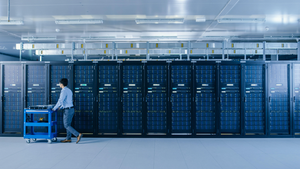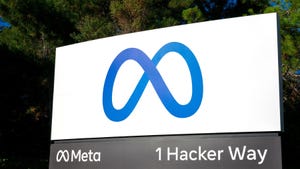
Insight and analysis on the data center space from industry thought leaders.
Be Proactive in Data Center Earthquake MitigationBe Proactive in Data Center Earthquake Mitigation
While we have yet to develop the technology to accurately predict where and when an earthquake will take place, there are precautions that owners and operators can take to help protect data centers from substantial earthquake damage.
July 10, 2017

Gary Wong is Director of Applications Engineering at Instor Solutions.
Of all the natural disasters that can affect data centers, earthquakes are among the most damaging. Given the data center industry’s continued growth and expansion throughout California, these potentially catastrophic events are always top of mind for data center owners and operators.
With the passing of the 27th anniversary of the 6.9-magnitude Loma Prieta earthquake, centered within 10 miles of Santa Cruz, now is the time for data centers across California and other areas prone to seismic activity to reevaluate their earthquake disaster strategies and look at the availability of proactive protection plans.
Across the world, there are an estimated 500,000 detectable earthquakes each year; 10,000 in the area of Southern California alone. These sobering facts lead to some important questions: If an earthquake like the Loma Prieta were to strike again, how are data centers better protected now than 27 years ago? What would the projected loss be to your company and customers if a major earthquake hit? What is your company doing to protect the valuable data and physical assets in your facility?
Earthquake damage can be particularly devastating to the data center industry for a variety of reasons. Going beyond the health and safety of its staff, the loss of uptime resulting from an earthquake can be financially devastating. If a seismic event occurs and the facility is unprotected, the physical damage to servers and IT equipment can also be beyond repair. This combination of loss of equipment and downtime for clients will likely result in the loss of the business in its entirety.
While we have yet to develop the technology to accurately predict where and when an earthquake will take place, there are precautions that owners and operators can take to help protect data centers from substantial earthquake damage. Whether planning a new build or retrofitting an existing facility, these forms of seismic planning should be a priority.
Cabinet Earthquake Mitigation Solutions: Rigid Bolting
The most commonly used method of earthquake protection is rigid bolting the data center equipment racks directly into the slab floor. If your data center is located in an area at-risk for seismic activity, this is the minimum method that should be used to protect your assets. Cabinet bolting physically protects personnel that are working within a data center during an earthquake, as the racks have less risk of falling over.
While the protection of personnel should always be the top priority, this method of securing racks is not the best solution to protect IT equipment. Because they are securely bolted to the floor, server racks will vibrate along with the ground. If the earthquake is relatively mild the sensitive equipment may escape unscathed, but more likely vibrations will rattle and shake equipment, causing costly damages. Rigid bolting is the absolute minimum level of protection a data center should employ, but there are other earthquake mitigation options to help protect IT equipment as well as data center personnel in the event of an earthquake.
Base Isolation Technology
A preferred method used for many years to protect buildings and bridges from earthquake damage, base isolation technology has been adapted to protect data center equipment and personnel as well. In brief, seismic base isolation systems work by decoupling strong seismic ground motions and vibrations from a structure, eliminating or drastically reducing the path through which damaging shock waves and vibrations can travel. The advantages of using this technology in data centers in earthquake prone areas is clear. Its ability to channel shock waves away from sensitive IT equipment goes far to protect assets, helping to ensure uptime in the event of a natural disaster.
Additionally, because the vibrations are mitigated server racks are also protected, thus helping to ensure that they won’t fall onto data center personnel. The benefits of seismic isolation are so great that this technique is the primary method used by data centers to achieve Tier 4 ratings in areas with substantial amounts of seismic activity. The results of utilizing seismic isolation can be dramatic, as this video of a data center in Anchorage, Alaska in the midst of a 7.12 earthquake shows.
Disaster Recovery Plans
The above technologies have been developed to prevent and mitigate earthquake damage, but every data center located in areas of seismic activity should also have a current business continuity and disaster recovery plan. Should damage to equipment or staff make it through your defenses, each member of the data center’s personnel needs to know what their role is in an emergency. Working in conjunction with the deployment of the above solutions, the IT and facilities staff should work together to identify the critical aspects of their data center responsibilities and the risks that earthquakes pose to them.
These risks should then then be compiled, reviewed and prioritized on an ongoing basis with the end result being a business continuity and disaster recovery plan that staff are drilled and tested on. Seismic events require an immediate response to mitigate damage, followed by a plan for long-term continuity, to ensure protection of staff, equipment, and client assets. Ongoing training for data center staff allows administrators to make changes and refinements, analyze and correct problems, and ultimately avoid making the same mistakes going forward. When it comes to a seismic event, no matter the size, seconds truly count. A well-written plan that staff has trained on can be the difference between maintaining uptime or going out of business.
Summary
There are a wide variety of crises that data centers owners and operators need to protect against, both human and environmental. While an imposing prospect, implementing new or upgrading existing safeguards that mitigate damage from earthquakes should be implemented without delay. Proven solutions and methodologies are available to help prevent damage to sensitive equipment and personnel, and recovery plans should always be developed, revised and trained against if your data center is located in an at-risk area. The stakes are simply too high to do otherwise.
Opinions expressed in the article above do not necessarily reflect the opinions of Data Center Knowledge and Penton.
Industry Perspectives is a content channel at Data Center Knowledge highlighting thought leadership in the data center arena. See our guidelines and submission process for information on participating. View previously published Industry Perspectives in our Knowledge Library.
About the Author
You May Also Like









